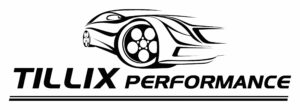The first myth I would like to dispel is the difference between a ‘Chip’ and a ‘Module’
The truth is there is NO difference what so ever.
Both perform the same task, which is controlling the engine and allowing the tuner to control what happens rather than the vehicles computer.
Some of the most advanced products available still call them selves a chip, and some of the cheapest and nastiest products call them selves a module and vice versa.
It is a bit of smart marketing aimed at confusing people nothing more.
Common Rail Chips: Comprises of two types of chips – Injector Extender and Pressure Increase
Common Rail Pressure Chip
The ‘Chip’ takes the common rail pressure sensor signal and drops it by X voltage so the engine control unit sees ‘low’ pressure at the common rail sensor.
The ECU then tries to correct this low voltage by demanding more pressure from the common rail pump.
This increase of common rail fuel pressure pressure increases the amount of diesel each injector fires, thus increasing power with the extra fuel injected.
The benefit to this type of chip is that higher injection pressures make everything work better. Fuel economy, power, emissions everything gets better with higher pressures.
There is however a limit and it comes in two types.
#1 ECU Limitation:
If the ECU see’s a low pressure signal, even though it is ramping the common rail pump as high as it will go, it knows there is a leak in the system from its logic.
So it will give the telltale check engine light and normally put the engine into limp mode to prevent any further damage to the vehicle.
#2 Mechanical Limitation
There is a relief valve fitted into the common rail that allows the pressure to be relieved upon the event of a high pressure situation that the ECU cannot control.
This is a true failsafe that can prevent damage to the engine and/or fuel system in the event of a problem.
Some vehicles have a limit only just above their operating range that do not give a large amount of tuning scope. There is options to either remove the relief and blank it totally, or modify it to open at higher pressures. Sometimes this is necessary when tuning for larger power figures but it is not recommended to alter this valve under most circumstances.
Injector Extender Chip
The engine control unit fires the injector when required, the ‘Chip’ does not allow the ECU to close the injector when it is asked by the ECU. It keeps it open for a few milliseconds longer which allows more fuel to be added per injector fire sequence.
Power is supplied to each injector constantly and the ecu turns the earth on to open the injector and off to close it.
The injector extender chip watches for end of injection point, and maintains the earth contact to keep the injector open.
This type of chip can work in one of two ways. It can directly manipulate the injector firing sequence, or it can intercept the signal from the ecu to the injector driver.
Both ways are a perfectly acceptable way of achieving the same result.
The benefit to this type of modification is that the ecu is totally unaware the injector is being held open longer. You will never get a check engine light or any type of limp mode from this type of chip regardless of how it is tuned.
The drawback is inefficient burning of the fuel. Because the fuel is being injected at the very end of the cycle, there is alot less oxygen to mix with an burn the additional fuel that is in there.
It normally causes more smoke, higher exhaust gas temperatures and lower economy compared to a Rail type chip.
Best of both worlds?
Ideally your chosen method of tuning the engine will allow both of these fuel modification and when balanced together can give the best of both worlds.
Fuel Pressure Chips: Plug into the Fuel pressure Sensor on the common rail.
Extender Chips: Plug into injectors.
Chips that can adjust injection timing: Plug into the crank angle sensor.
Chips that can adjust Boost: Plug into the MAP (Manifold Absolute Pressure) Sensor.
Chips that can control everything in one: Plug into the main ECU harness or have multiple engine connections.
DTE, HKS & Unichip are examples of chips that can control all of the important engine parameters.
ECU Remapping
The new kid on the block as they say.
The truth behind it is remapping has been around longer than chips have. Without remapping the high level of control we currently have over an engines would not be possible.
A remap can do everything a chip can do, and then more.
Any parameter that is controlling the engine can be adjusted when remapping. Even the most advanced chips used today can modify but a fraction of what is available.
Due to its status among the diesel community, it is a booming business and there is a lot of companies out there now offering this service.
One thing to understand is that for some of them, it is a cash grab. For the majority however, they have progressed from tuning mechanically and using chips over the years and have delved into the remapping world because that is the next logical step in a successful tuning business.
When choosing whether you should have a remap or a chip, or where you get the work performed the most important part is having a good rapport with the person that will be doing the job.
Our Advice
DO NOT pay any attention to mass advertising! Go and search for information and reviews.
Join facebook pages related to your vehicle, join forums related to your vehicle… ASK QUESTIONS of the members who have had work performed and get some decent feedback.

